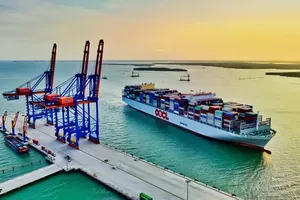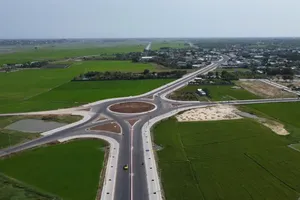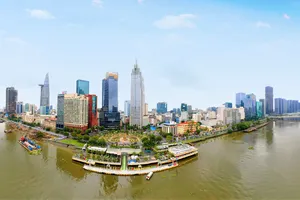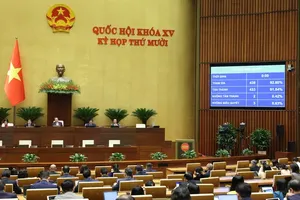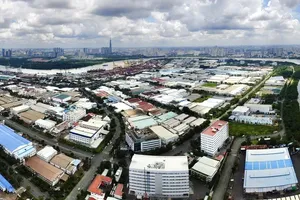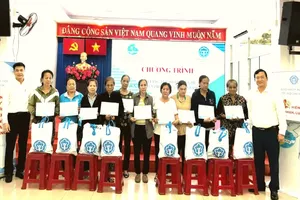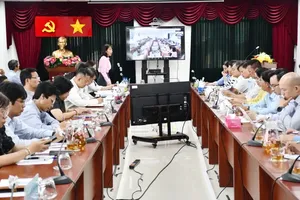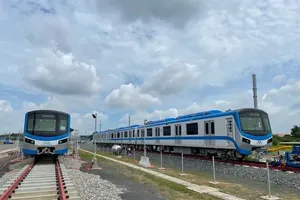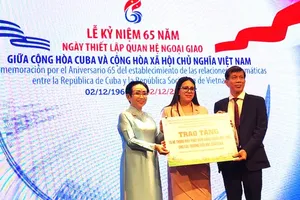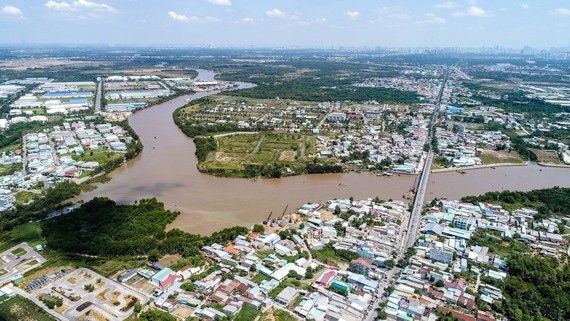
Making transport connectivity between HCMC and Can Giuoc more convenient
According to a survey made by the departments of Transport of HCMC and Long An Province, a network of 23 roads linking two localities needs expansion to meet increasing public's travelling demand.
Accordingly, the National Highway 50 running through HCMC’s Binh Chanh District and Long An Province’s Can Giuoc District will be widended to 34 meters at a total investment capital of VND2,150 billion (US$92.7 million), including VND1,500 billion (US$64.7 milllion) to built the section in HCMC and VND650 billion (US$28 million) invested in Long An’s section.
In addition, nearly VND4,300 billion (US$185.4 milion) will be invested in a new road running parallel to the National Highway 50, starting from Binh Chanh District to a key road, ĐT827E in Can Giuoc. Of which, VND3,200 billion (US$137.8 million) comes from HCMC and VND1,100 (US$47.3 million) will be supported by Long An Province.
The Le Van Luong Road from HCMC’s Nha Be District to the provincial road 826C in Long An Province’s Can Giuoc District will be expanded at a cost of VND1,030 billion (US$44.3 million). The city will spend VNDVND790 billion (US$34 million) to build a section of 3 kilometers and Rach Doi Bridge while the remaining money of VND240 billion (US$10.3 million) will be financed by Long An Province.
In another hand, the city’s government has assigned the Management Authority of Southern Area Development (MASD) and the People’s Committee of Nha Be District to build the plan on upgrading Nguyen Van Tao Street in Nha Be into 6-8 lane road.
Notably, the city’s authorities have approved the construction project of metro line 4 starting from District 12’s Thanh Xuan Ward, crossing Ho Con Rua (Turtle Lake Fountain) in District 3, Ben Thanh Market in District 1, Hoang Dieu Street in District 4, Nguyen Thi Thap Street and Nguyen Van Linh - Nguyen Huu Tho interchange in District 7 to Hiep Phuoc Urban Area in Nha Be District. The metro line 4 has a total length of 36.2 kilometers, including underground section of 16.3 kilometers and elevated section of 19.9 kilometers) with an estimated capital of US$4.57 billion.
Establishing HCMC’s satellite urban areas
The City People’s Committee has also approved the planning of the Hiep Phuoc port-urban area in the southern district of Nha Be, making it to become one of the five HCMC’s satellite urban areas, including the Central Area consisting of districts 1,3,4,5,6,8,10,11, Go Vap, Tan Binh, Binh Thanh, Phu Nhuan and Tan Phu; the Northern urban area in Cu Chi and Hoc Mon districts; the Eastern urban area of Thu Duc City; the Southern urban area in the Saigon South New Urban Town in District 7 and Hiep Phuoc Port Urban Area in Nha Be District; and the Western urban area in Binh Chanh District.
According to the djusted construction master plan for the Ho Chi Minh City Zone to 2030 with a vision to 2050, Long An Province’s districts of Duc Hoa, Ben Luc and Can Giuoc will be developed as HCMC’s satellite urban areas.
Strengthening transport connectivity between HCMC and Long An Province further boost the development of the two sides, said the Department of Transport of HCMC.
The department hoped that municipal People’s Committee will give a nod to the project of a massive highways expansion in the 2021-2025 period that can occur simultaneously with the plan on turning five suburban districts namely Hoc Mon, Binh Chanh, Nha Be, Cu Chi and Can Gio into urban districts.
Nha Be District has currently seen a stream of property investors and a sharp increase of real estate market. The price of the land plot on Nguyen Huu Tho Street soared to VND10 billion (US$430.800) for an area of 90 square meters, VND60 million (US$2,580) per square meters on Nguyen Van Tao Street in Long Thoi Commune and around VND40 million (US$1,700) in Hiep Phuoc Commune.
While Can Giuoc District in Long An Province has land prices of VND1.8-2.5 billion for an area of 100 square meters.
